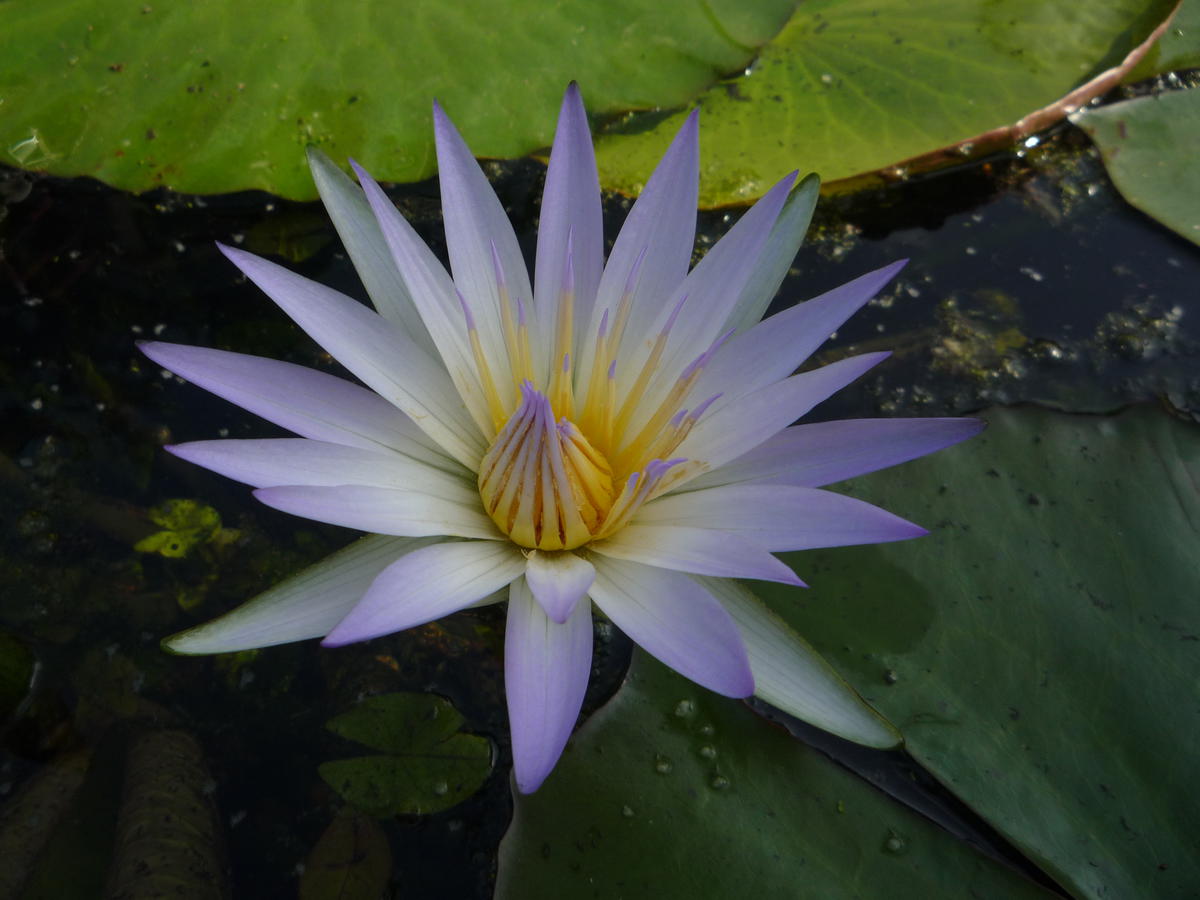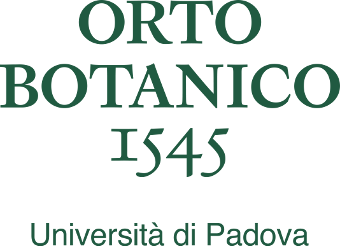Development of reproductive structures in seed plants
Research projects - Padua Botanical Garden
Study of the development of reproductive structures in plants from a molecular and evolutionary perspective is of fundamental importance in understanding the dynamics that regulate plant biodiversity and adaptation.
At molecular level, the study of cone, flower, seed and fruit development makes it possible to identify the genes and mechanisms involved in the process. Understanding which genes are activated at certain developmental stages and how they interact with each other enables definition of the molecular pathways leading to flower formation and seed and fruit production.
From an evolutionary point of view, the study of flower, seed and fruit development allows the origins and evolution of these structures in the plant kingdom to be traced. By analysing the differences and similarities in the developmental mechanisms of different plant species, it is possible to reconstruct the genetic and morphological changes that led to diversification of reproductive strategies. This information provides important keys to understanding how plants have adapted to environmental variations and developed specific reproductive strategies. To this end, molecular investigation techniques (RNA/DNA sequencing, expression studies by situ hybridisation) are employed in the Botanical Garden’s research laboratories to identify and study the genes involved in the development processes of the reproductive structures of different plant groups.
Funding: MIUR PRIN 20175R447S, MSCA-RISE “EVOfruland”
ITALIAN
Studio dei geni coinvolti nello sviluppo del fiore e del frutto di Nymphaea caerulea e di Trithuria submersa
La ricerca è incentrata sullo studio dello sviluppo del fiore e del frutto nella ninfea blu (Nymphaea caerulea) e in Trithuria submersa, due specie appartenenti al gruppo di piante considerate, dal punto di vista evolutivo, tra le prime che hanno sviluppato il fiore come struttura dedicata alla riproduzione.
Referenti del progetto: dott.ssa Silvia Moschin, dott. Sebastiano Nigris, prof.ssa Barbara Baldan
In collaborazione con: prof.ssa Lucia Colombo - Università degli Studi di Milano, Simona Masiero - Università degli Studi di Milano, prof. Leonardo Bruno - Università della Calabria
Parole-chiave: fiore, riproduzione, Nymphaea caerulea, Trithuria submersa

Studio dei geni coinvolti nello sviluppo delle strutture riproduttive maschili e femminili delle gimnosperme Ginkgo biloba e cycas
La ricerca coinvolge due specie di gimnosperme, quel gruppo di piante che per prime hanno evoluto il seme come struttura riproduttiva e di colonizzazione di nuovi territori: Ginkgo biloba e Cycas revoluta. È incentrata sullo studio dei geni coinvolti nelle strutture riproduttive maschili e femminili e dell’interazione tra polline maschile e ovulo femminile per una corretta successiva fecondazione e sviluppo del seme.
Questa ricerca ha già dimostrato come l’arrivo del polline guidi lo sviluppo dell’ovulo rendendolo pronto alla fecondazione e trasformazione in seme (D’Apice et al., 2021, New Phytol., 2353, D’Apice et al., 2022, Am. J. Bot., 887).
Referenti del progetto: dott.ssa Elisabetta Offer, dott.ssa Silvia Moschin, dott. Sebastiano Nigris, prof.ssa Barbara Baldan
In collaborazione con: prof.ssa Lucia Colombo - Università degli Studi di Milano, prof. Leonardo Bruno - Università della Calabria
Parole-chiave: gimnosperme, ginkgo, cycas

Evoluzione dei meccanismi molecolari che controllano lo sviluppo delle strutture riproduttive nella gimnosperma Ginkgo biloba
L’affermazione del seme è stata una tappa chiave nell’evoluzione delle piante terrestri. I processi di impollinazione e fecondazione sono fondamentali nella riproduzione delle piante poiché assicurano la produzione dei semi e in definitiva la propagazione della specie. La maggioranza degli studi sulla riproduzione delle piante che producono semi sono stati condotti su specie modello, attraverso lo studio del loro fiore, ma per una migliore comprensione dell’evoluzione e dei meccanismi molecolari che regolano questi processi è necessario anche studiarli nelle gimnosperme, cioè le piante che producono semi senza avere dei veri e propri fiori. Nella gimnosperma Ginkgo biloba, il caratteristico albero con foglie a ventaglio che diventano giallo oro prima di cadere in autunno, l’impollinazione e la fecondazione sono separate temporalmente, a differenza di quanto avviene nei fiori, in cui i due processi avvengono uno di seguito all’altro.
Dagli alberi di Ginkgo dell’Orto botanico di Padova sono state raccolte strutture riproduttive maschili e femminili a diversi stadi di sviluppo. Utilizzando questo materiale e tecniche di indagine avanzate (analisi RNAseq, trascrittomica, metabolomica, diversi approcci morfologici, ibridazione in situ) sono stati studiati dettagliatamente lo sviluppo del polline, il meccanismo di impollinazione, la germinazione del tubetto pollinico dentro l’ovulo e, per la controparte femminile, lo sviluppo dell’ovulo e i meccanismi di fecondazione. La descrizione dei geni attivati o soppressi nel momento cruciale dell’impollinazione (D’Apice et al., 2021, New Phytol., 2353) e il dialogo molecolare tra sporofito e gametofito femminile (D’Apice et al., 2022, Am. J. Bot., 887) sono stati recentemente pubblicati dal gruppo, che coordina un progetto finanziato dall’EU (MSCA-RISE EVOFRULAND) coinvolgendo altri 13 gruppi di ricerca internazionali.
Referente: prof.ssa Barbara Baldan
In collaborazione con: 13 gruppi di ricerca internazionali nell’ambito del progetto europeo MSCA-RISE EVOFRULAND, di cui Padova è capofila
Parole-chiave: gimnosperme, polline, riproduzione, semi, Ginkgo biloba

ENGLISH
Study of the genes involved in flower and fruit development in Nymphaea caerulea and Trithuria submersa
The research focuses on the study of flower and fruit development in the blue water lily (Nymphaea caerulea) and Trithuria submersa, two species belonging to the group of plants that, from an evolutionary point of view, are considered to be among the first to develop the flower as a structure dedicated to reproduction.
Project contacts: Dr. Silvia Moschin, Dr. Sebastiano Nigris, Prof. Barbara Baldan
In collaboration with: Prof. Lucia Colombo - University of Milan, Dr. Simona Masiero - University of Milan, Prof. Leonardo Bruno - University of Calabria
Keywords: flower, reproduction, Nymphaea caerulea, Trithuria submersa

Study of the genes involved in development of male and female reproductive structures in the gymnosperms Ginkgo biloba and Cycas
The research involves two species of gymnosperm, the group of plants that first evolved the seed as a structure for reproduction and the colonisation of new territories: Ginkgo biloba and Cycas revoluta. The study focuses on the genes involved in the male and female reproductive structures and the interaction between male pollen and female ovule for correct subsequent fertilisation and sperm development.
The research has already shown how the arrival of pollen drives ovule development, making it ready for fertilisation and transformation into seed (D’Apice et al., 2021, New Phytol., 2353, D’Apice et al., 2022, Am. J. Bot., 887).
Project contacts: Dr. Elisabetta Offer, Dr. Silvia Moschin, Dr. Sebastiano Nigris, Prof Barbara Baldan
In collaboration with: Prof. Lucia Colombo - University of Milan, Prof. Leonardo Bruno - University of Calabria
Keywords: gymnosperms, ginkgo, cycas

Evolution of the molecular mechanisms controlling development of the reproductive structures of the gymnosperm Ginkgo biloba
Establishment of the seed was a key stage in the evolution of land plants. Pollination and fertilisation are fundamental processes in plant reproduction as they ensure seed production and ultimately propagation of the species. Most studies on the reproduction of seed-producing plants have been carried out by studying the flowers of model species, but for a better understanding of the evolution and molecular mechanisms regulating these processes, they must also be studied in gymnosperms, namely plants that produce seeds without genuine flowers. In the gymnosperm Ginkgo biloba, a characteristic tree with fan-shaped leaves that turn golden yellow before falling in autumn, pollination and fertilisation are separated in time, unlike in flowers, where the two processes occur one after the other.
Male and female reproductive structures at different stages of development were collected from Ginkgo trees in the Botanical Garden of Padua. Using this material and advanced investigation techniques (RNAseq analysis, transcriptomics, metabolomics, various morphological approaches, in situ hybridisation), pollen development, pollen tube germination inside the ovule and, for the female counterpart, ovule development and fertilisation mechanisms were studied extensively. A description of the genes activated or suppressed at the crucial moment of pollination (D’Apice et al., 2021, New Phytol., 2353) and the molecular dialogue between sporophyte and female gametophyte (D’Apice et al., 2022, Am. J. Bot., 887) were recently published by the group, which coordinates an EU-funded project (MSCA-RISE EVOFRULAND) involving 13 other international research groups.
Contact: Prof. Barbara Baldan
In collaboration with: 13 international research groups involved in the European MSCA-RISE EVOFRULAND project, with Padua as the lead partner
Keywords: gymnosperms, pollen, reproduction, seeds, Ginkgo biloba







